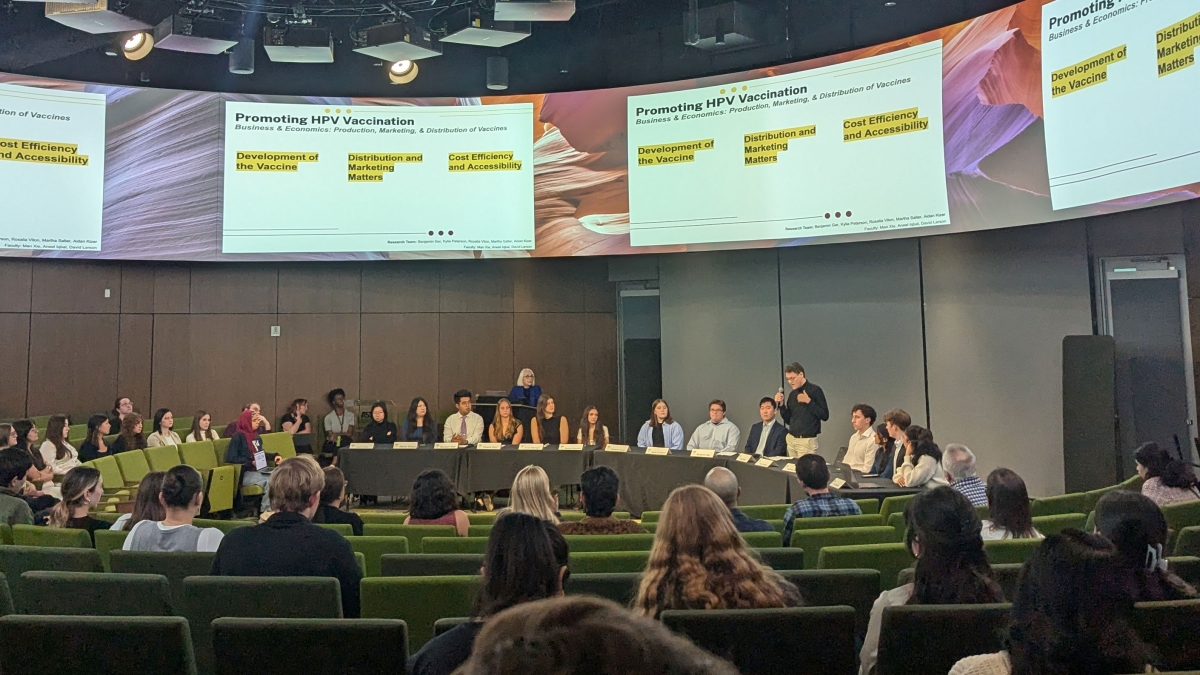Even before the COVID-19 crisis wreaked havoc on America’s health care system, there were other challenges faced by those in need of care, not least of all being access and cost. Telehealth seemed like a good solution, but it came with a new set of issues, including how to meet HIPAA regulations, reimbursement for telepractice visits and a lack of licensure portability across state lines.
Now, the pandemic having forced its hand, the system has liberalized technical barriers due to HIPAA compliance, a majority of health care providers are being reimbursed by both third-party payers and Medicare, and some providers’ licensure regulations have been lifted.
All of that has been music to the ears of practitioners at the ASU College of Health Solutions Speech and Hearing Clinic. The clinic had dabbled in telehealth before, but it hadn’t been able to expand its offerings as much as it would have liked in order to fully serve its diverse, and often vulnerable, patient population. With these recent changes, the clinic was able to fully transition to telepractice in just over a month.
“There was a lot of red tape before,” clinic Director Joshua Breger said. “It’s amazing how fast that got out of the way. It allows us to have a larger reach to the community and those individuals who might not have as easy access to the clinic due to financial or physical restraints.”
While the clinic already accepted Medicare and most major insurances, and offered group discounts, thanks to recent donations from the Scottish Rite Dyslexia Programs and ASU’s own National Student Speech Language Hearing Association (NSSLHA), the majority of their services will be provided at no cost throughout the summer.
As a result, since the virtual transition, the average number of clients served by the clinic has not wavered, remaining at roughly 90 per week, both through the Tempe Adult Clinic and the Pediatric Communication Clinics. Some of the services provided include adult aphasia groups, pediatric language and literacy camps, Parkinson’s voice groups and transgender voice therapy.
The need for these kinds of services to continue is at the forefront of clinic practitioners’ minds. When it comes to children, clinical professors of speech and hearing science and pediatric clinic practitioners Jean Brown, Dawn Greer and Victoria Clark said in a joint statement that “high quality early intervention programs for vulnerable infants and toddlers can reduce the incidence of future problems in their learning, behavior and health status,” and “intervention is likely to be more effective and less costly when it is provided earlier in life.”
As for adults, Breger said, services like aphasia therapy and accent modification can have huge impacts on things like social life, personal identity, job interview outcomes and overall quality of life.
Mansooreh Karami, a PhD student in computer engineering at ASU and a native of Iran, has been taking accent modification classes for two semesters to Americanize her unique Persian-British accent. She said the transition online was very smooth, and she has noticed that as a teacher’s assistant, the students in her classes are finding it easier to understand her.
“I can see the reactions throughout the semester from my students’ faces,” Karami said. “At the beginning, they’re concentrating so hard to figure out what I’m saying, but right now I can see that they clearly understand me.
“It has really helped me in gaining a lot of confidence.”
In addition to serving the community, transitioning to telehealth has also allowed the clinic to continue the other half of its mission: educating the next generation of speech and hearing providers.
Communications disorders graduate student Alexandra Werner is one of 45 graduate student clinicians who meet with clients and provide services on a weekly basis throughout the semester. Currently, she is working with a 6-year-old with a fluency disorder, commonly known as stuttering. Though keeping children’s attention via Zoom can be difficult, there is a silver lining in some of the online platform’s capabilities that she has been able to put to use, such as screen sharing so that she can draw and spell out words for him.
“I think this whole thing will change a lot of things in our society, and possibly will change the way we interact with clients more than before,” Werner said. “So I think it’s really helpful to have this telehealth practice and experience.”
College of Health Solutions Clinical Assistant Professor Elizabeth Trueba, one of the clinic’s eight faculty supervisors who oversee student clinicians, has been impressed with their ability to adapt.
“Students have been really creative in thinking of ways they can still challenge clients and give them the best therapy,” Trueba said. “We will be remote all summer, so this is a nice opportunity for us to play with it and find what works, because we’ve been talking about how we can access other remote areas around Arizona. It opens up a world of opportunity for us and for people living in smaller towns in Arizona that unfortunately don’t have access to any sort of out-patient speech therapy.”
Breger echoed Trueba’s sentiments: “The moment we knew the clinic was going remote, everybody did such a great job thinking about what we could do for our clients, how to reach out to them to make sure they still have the services they need. And it hasn’t been easy. Going online can be a challenge, especially for certain populations, but everybody has been really innovative, and hopefully after this is all done, we can continue to use this technology to reach more people.”
Top photo courtesy Pixabay
More Health and medicine
College of Health Solutions program doing its part during Salute to Service
It wasn’t always easy for Marine veteran Chuck Hale when he first returned to civilian life. But he’ll never forget the help he received from a fellow former service member.“The first vet that helped…

What makes human culture unique?
Why is human culture — the shared body of knowledge passed down across generations — so much more powerful than animal cultures?“What’s special about our species?” is a question scientists have…

ASU honors students work on HPV research as part of Barrett College's largest-ever group thesis
Not every undergraduate student comes across the opportunity to do research as part of a team. Even fewer have had the chance to join a team of 86 students doing multidisciplinary research with real-…
